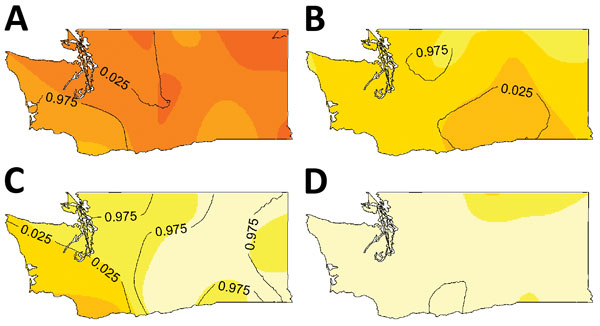Volume 24, Number 1—January 2018
Research
Geogenomic Segregation and Temporal Trends of Human Pathogenic Escherichia coli O157:H7, Washington, USA, 2005–20141
Figure 1

Figure 1. Escherichia coli O157:H7 lineage frequency among culture-confirmed human cases reported in Washington, USA, 2005–2014. A) Lineage Ib; B) lineage IIa; C) lineage IIb; D) rare lineages (12 different clinically rare lineages). Lineage-specific probability surfaces were determined by kernel-based estimation of spatial segregation. Darker shading indicates higher risk for that lineage. Contour lines marked 0.025 define areas in which there is a high probability of cases being caused by a given lineage, suggesting spatial segregation. Contour lines marked 0.975 define areas in which there is a low probability of cases being caused by the given lineage.
1Preliminary results from this study were presented at the International Meeting on Emerging Diseases and Surveillance (IMED), November 4–7, 2016, Vienna, Austria.